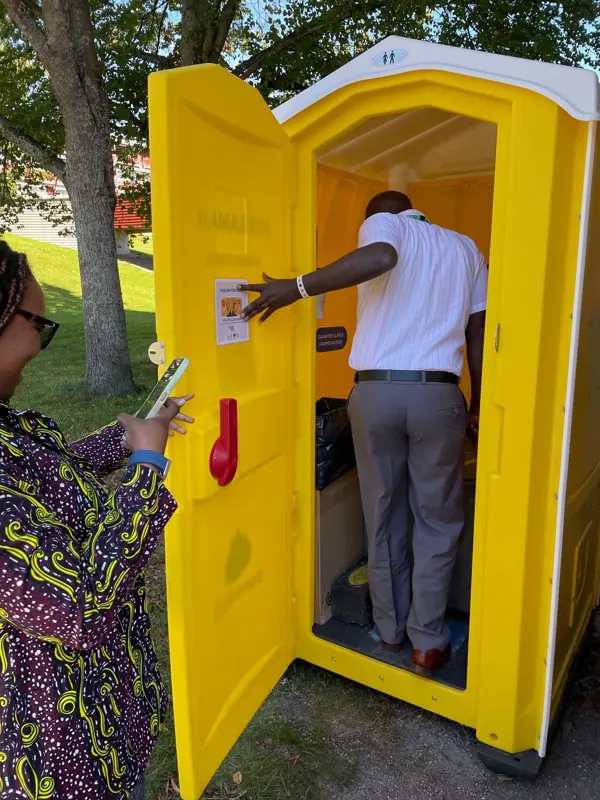From waste to wealth: How toilets can become fertiliser factories
In a changing world, one thing stays constant: we all need toilets. Sanitation protects our health and keeps our environment clean. World Toilet Day 2025, on 19 November, highlights “Sanitation in a changing world” and the need for future-ready systems and services. Check out SLU’s contribution!
Kissamajan - the compact, odourless unisex urinal. Photo: Malin Planting
Today, billions of people still live without a safe toilet — with the poorest, especially women and girls, worst affected. And the pressure on sanitation is only increasing. Across the world, ageing infrastructure is failing and climate change is reshaping our world – with glaciers melting, weather worsening, and sea levels rising.
The urine generated in every household is considered as “waste”, which is costly to manage and even after treatment still contributes to environmental problems. Over 20 years of research at the Swedish University of Agricultural Sciences (SLU) has resulted in a team of experts specialising in nutrient recycling and safer toilets. They have been pioneers of circular bathrooms and fertilisers since 2019. In 2025 they launched the Kisssamaja which is a compact, odourless unisex urinal used at festivals around Sweden.
The urine is stabilised directly in the Kissamaja and transported to facilities for drying and granulation. The result is a hygienised fertiliser rich in nitrogen which can be used by farmers to grow all kinds of food, promoting a circular food system. By turning urine into fertiliser, we not only reduce waste—we create cleaner water, safer toilets, and sustainable communities.
- Urine contains 80% of the plant nutrients found in our wastewater, while faeces contain the majority of the carbon and potential pathogens. By managing the two streams of excreta separately, we can safely return the nutrients from the urine back to the fields to produce more food, says Professor Björn Vinnerås, Department of Energy and Technology; Environmental Engineering.
- If we take the nutrients from the excreta, we can actually replace one third of the chemical fertilisers that we are using in agriculture today. This is an important part, especially in poor countries, but also when we talk about resilience. In a country like Sweden, that has no fertiliser production, we can have one third of the fertiliser used, produced locally in Sweden, Björn continues.
Short facts about urine
2 persons produce 1 tonne of urine per year.
1 person’s daily pee contains enough nutrients to fertilise a field that produces 500 grams of wheat, enough to make a whole loaf of bread.
90% of fertiliser supply is imported to most countries, putting food production at risk during times of geopolitical uncertainty.
Read more
Read more at Sanitation 360 | Protect the environment by going to the bathroom with us
The World Toilet Day 2025 campaign calls for toilets that are:
- Accessible to all.
- Resilient to floods, droughts and other climate shocks.
- Minimise greenhouse gas emissions.
- Supported by strong systems and sustained investment.
Contact
-
PersonBjörn Vinnerås, Professor in Environmental EngineeringEnvironmental Engineering
